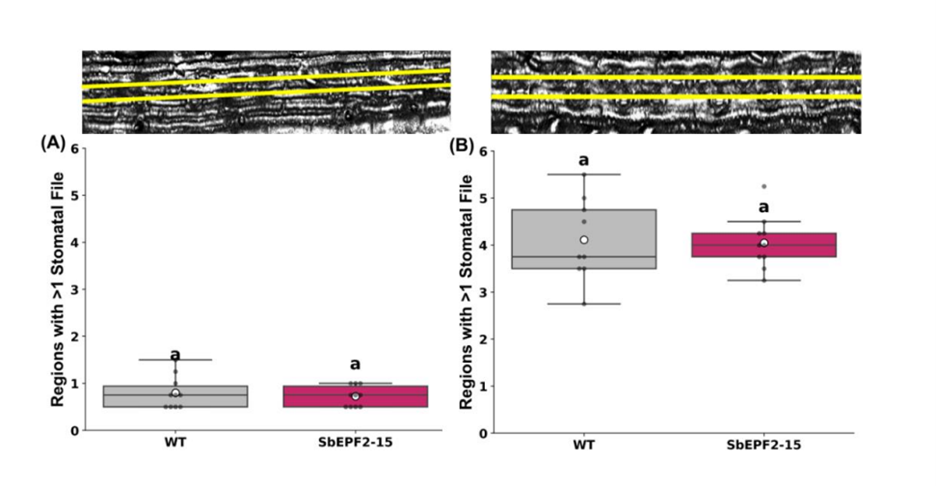Greater Aperture Counteracts Effects of Reduced Stomatal Density on WUE: A Case Study on Sugarcane and Meta-Analysis
Themes: Feedstock Production
Keywords: Phenotyping, Water Use Efficiency
Citation
Lunn, D., Kannan, B., Germon, A., Leverett, A., Clemente, T.E., Altpeter, F., Leakey, A.D.B. July 12, 2024. Dataset for “Greater Aperture Counteracts Effects of Reduced Stomatal Density on WUE: A Case Study on Sugarcane and Meta-Analysis.” University of Illinois Urbana-Champaign. DOI: 10.13012/B2IDB-9701546_V1.
Overview

Stomata regulate CO2 and water vapor exchange between leaves and the atmosphere. Stomata are a target for engineering to improve crop intrinsic water use efficiency (iWUE). One example is by expressing genes that lower stomatal density (SD) and reduce stomatal conductance (gsw). However, the quantitative relationship between reduced SD, gsw, and the mechanisms underlying it is poorly understood. We addressed this knowledge gap using low-SD sugarcane (Saccharum spp. hybrid) as a case study alongside a meta-analysis of data from 10 species. Transgenic expression of EPIDERMAL PATTERNING FACTOR 2 from Sorghum bicolor (SbEFP2) in sugarcane reduced SD by 26-38% but did not affect gsw compared to wildtype. Further, no changes occurred in stomatal complex size or proxies for photosynthetic capacity. Measurements of gas exchange at low CO2 concentrations that promote complete stomatal opening to normalize aperture size between genotypes were combined with modeling of maximum gsw from anatomical data. These data suggest that increased stomatal aperture is the only possible explanation for maintaining gsw when SD is reduced. Meta-analysis across C3 dicots, C3 monocots, and C4 monocots revealed engineered reductions in SD are strongly correlated with lower gsw (r2=0.60-0.98), but this response is damped relative to the change in anatomy.
Data
Illinois Data Bank – stomatal patterning, expression data, and leaf physiology